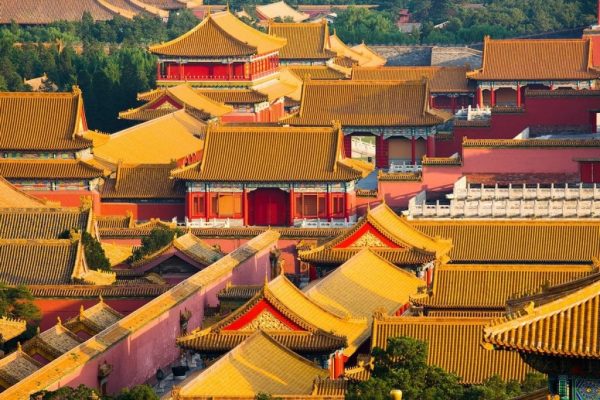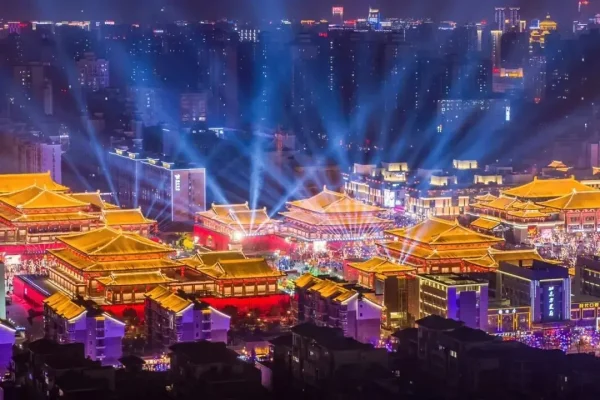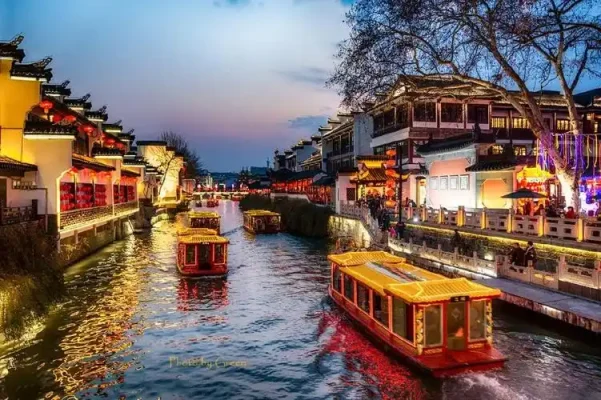A Travel Guide to Kaifeng and Luoyang: Unveiling the Splendor of Ancient Capitals
Lorem ipsum dolor sit amet, consectetuer adipiscing elit, sed diam nonummy nibh euismod tincidunt ut laoreet dolore magna aliquam erat volutpat.
Tags:
Kaifeng / Luoyang / Roujiamo / Yangrou Paomo
Introduction
Kaifeng and Luoyang, two historical gems in Henan Province, China, are steeped in a rich tapestry of history, culture, and tradition. With a combined history spanning thousands of years as imperial capitals, they offer travelers an unforgettable journey back in time, filled with ancient relics, magnificent architecture, and mouthwatering cuisine. This guide will take you through the must – visit attractions, delicious local foods, accommodation options, and transportation tips for both cities.
Kaifeng: A Glimpse into the Glorious Song Dynasty
Historical and Cultural Attractions
- Qingming Shanghe Garden: Modeled after the famous painting “Riverside Scene at Qingming Festival”, this theme park recreates the bustling life of the Northern Song Dynasty. Wander along the meandering river, explore the replicas of Song – style buildings such as temples, bridges, and marketplaces. Throughout the day, there are various cultural performances, including traditional music, acrobatics, and folk dances. Don’t miss the large – scale nighttime show “The Song of the Eastern Capital”, which uses lights, music, and water effects to vividly depict the prosperity of the Song Dynasty. It is located at 5 Longting West Road, Longting District.
- Kaifeng Mansion: Situated on the north bank of Baogong Lake, Kaifeng Mansion was the administrative center during the Song Dynasty. Here, you can watch the reenactment of the famous judge Bao Zheng handling cases, which gives you a sense of the judicial system in ancient times. The architecture within the mansion is a fine example of Song – style construction, with elegant pavilions, halls, and gardens. It is in Gulou District, by Baogong Lake’s east bank.
- Dragon Pavilion Park: This park is centered around the Dragon Pavilion, which was once the imperial palace of the Northern Song Dynasty. The pavilion stands on a high blue – brick platform, 13 meters above the ground. The steps leading to the main hall are intricately carved with cloud and dragon patterns. From the top, you can overlook the entire park and enjoy the beautiful scenery of the surrounding lakes and gardens. It is located in Longting District.
- Kaifeng Iron Pagoda: Built in 1049 during the Song Dynasty, this 55.88 – meter – tall octagonal pagoda is the tallest, oldest, and best – preserved glazed – brick pagoda in China. Despite its name, it is actually made of brown – glazed bricks, which give it the appearance of iron. The pagoda’s walls are adorned with over 50 types of intricate carvings, including flying apsaras, dragons, and mythical beasts.
- State Bridge Ruins: Located at the intersection of Ziyou Road and Zhongshan Road in Gulou District, the State Bridge Ruins are an important archaeological discovery that showcases the city’s long – standing history. It provides a window into the urban construction and transportation network of ancient Kaifeng.
- Muslim Quarter: This vibrant area is full of narrow lanes lined with food stalls, shops, and restaurants. Here, you can sample a variety of local snacks, such as roujiamo (Chinese hamburger), yangrou paomo (pita bread soaked in lamb soup), and various kinds of noodles. The area also has a unique cultural atmosphere, with the influence of Islamic culture being evident in the architecture and the daily life of the local residents.
Culinary Delights
- Roujiamo: A crispy bread bun filled with tender, slow – cooked pork or beef, seasoned with cumin, chili, and other spices. It is a popular street food that can be found at many stalls, especially near historical sites like the City Wall.
- Yangrou Paomo: A hearty and flavorful dish. Small pieces of flatbread are crumbled and simmered in a rich lamb broth, then served with pickled garlic and a drizzle of chili oil. It is not only delicious but also very filling, perfect for a cold day.
- Biangbiang Noodles: These are thick, wide, and chewy noodles tossed in a spicy sauce made with garlic, soy sauce, and vegetables. The process of making these noodles is quite a spectacle, as the vendors skillfully pull and stretch the dough.
- Jianbing: A savory breakfast crepe made from mung bean batter. It is topped with eggs, scallions, chili sauce, and a crispy cracker, then folded into a convenient handheld snack.
- Kaifeng – style Dumplings: These dumplings come in various fillings, such as pork, beef, or a combination of meat and vegetables. They are often served with a dipping sauce made of vinegar, soy sauce, and minced garlic.
Accommodation
- Luxury:
- Pullman Kaifeng: Located at 16 Longting North Road, this hotel features a beautiful lakeside setting with elements of Northern Song Dynasty architecture. It offers luxurious rooms, a spa, and multiple dining options.
- New Century Grand Hotel Kaifeng: Situated at 1 Zhengkai Avenue East in the new district, it provides a grand and comfortable stay, with a large garden and excellent service.
- Mid – range:
- Hanting Hotel: There are several branches in Kaifeng, offering clean and comfortable rooms at an affordable price. They are usually located in convenient areas, close to public transportation and major attractions.
- Home Inn: Another popular mid – range option, known for its simple yet functional rooms and friendly service.
- Budget:
- Kaifeng Youth Hostel: Offers dormitory beds and private rooms, which are suitable for backpackers. It often has a lively atmosphere, with opportunities to meet other travelers. Some hostels may also provide bike rentals, making it easy to explore the city.
Transportation
- Getting Around: Kaifeng has a relatively convenient public transportation system. Buses cover most areas of the city, and the fare is usually around 1 – 2 yuan. Taxis are also available, but make sure the driver uses the meter. For short – distance trips, shared bikes are a great option, allowing you to explore the city at your own pace.
- From Other Cities: If you are coming from Zhengzhou, the capital of Henan Province, you can take a high – speed train from Zhengzhou East Station to Kaifeng North Station, which only takes about 20 – 30 minutes. There are also regular buses running between the two cities, which are a more budget – friendly option but may take longer.
Luoyang: The Cradle of Chinese Civilization
Must – visit Attractions
- Longmen Grottoes: One of the four major grottoes in China, the Longmen Grottoes are a UNESCO World Heritage Site. Located in Luolong District, along the Yi River, these grottoes contain thousands of Buddha statues carved into the cliffs. The most famous is the Fengxian Temple, commissioned by Empress Wu Zetian during the Tang Dynasty. The 17 – meter – tall Vairocana Buddha statue in the temple is a masterpiece of Buddhist art, with a serene and compassionate expression. It is at 13 Longmen Middle Street, Luolong District.
- Luoyang Museum: Housed in a modern and architecturally stunning building, the Luoyang Museum is a treasure trove of ancient Chinese history and culture. It showcases over 400,000 artifacts, including pottery, bronze ware, and Tang – Dynasty – era treasures. Some of the highlights are the pre – Qin – period Ruyi – shaped copper ding and the Tang – Dynasty tri – colored glazed horse. It is located at the intersection of Nietai Road and Wenbo Road, Luolong District.
- Laojun Mountain Scenic Area: A sacred Taoist mountain, Laojun Mountain offers breathtaking views of mountains, forests, and clouds. You can take a cable car part of the way up and then hike to the summit. Along the way, you will pass by ancient Taoist temples and pavilions. In winter, the snow – covered mountains create a fairy – tale – like landscape. It is in Qiliping Village, Luanchuan County.
- Sui – Tang City Ruins Botanical Garden: This large – scale botanical garden is built on the ruins of the Sui and Tang Dynasties. It features a variety of plants, including rare and exotic species. The garden also has several pavilions, lakes, and bridges, which are designed in the style of the Sui and Tang Dynasties. It is at 281 Wangcheng Avenue, Luolong District.
- White Horse Temple: Known as the “first temple in China”, White Horse Temple was built in the Eastern Han Dynasty. It is an important place for the spread of Buddhism in China. The temple complex includes several halls, pagodas, and gardens, with a solemn and peaceful atmosphere. The architecture combines traditional Chinese and Indian styles.
Gastronomic Experiences
- Luoyang Water Banquet: A unique and elaborate dining experience, the Luoyang Water Banquet consists of 24 courses, mostly served in soup or broth. The dishes are not only delicious but also have symbolic meanings. One of the signature dishes is Mudan Yancai (Peony Swallow Dish), which is named for its resemblance to a swallow and is often decorated to look like a peony flower.
- Stewed Noodles: A popular local dish, stewed noodles are thick wheat noodles cooked in a rich broth with meat (usually beef or mutton), vegetables, and various seasonings. It is a hearty and satisfying meal.
- Yangrou Tang (Lamb Soup): A staple in Luoyang’s cuisine, lamb soup is made by simmering lamb bones and meat for a long time to create a rich, flavorful broth. It is usually served with flatbread or noodles on the side and can be customized with condiments like scallions, coriander, and chili oil.
- Baozi (Steamed Buns): Luoyang has its own variety of baozi, with fillings ranging from pork and vegetables to beef and spices. These steamed buns are a convenient and delicious snack or meal.
Accommodation Options
- Luxury:
- The Peninsula Palace Hotel Luoyang: With its elegant Chinese – style decor, this hotel offers top – notch facilities, including a spa, fitness center, and multiple dining options. It is located in a prime area, close to major attractions.
- Hilton Luoyang Riverside: Overlooking the Luo River, it provides luxurious rooms with beautiful views. The hotel has a large outdoor pool and a range of international and local dining choices.
- Mid – range:
- Han Tang Hotel: Near the city center, it offers comfortable rooms with a touch of traditional Chinese culture in the decor. The hotel also provides services such as laundry and airport shuttle (for an additional fee).
- 7 Days Inn: A well – known budget – friendly chain, 7 Days Inn in Luoyang offers clean and basic rooms at an affordable price. It is usually located in areas with easy access to public transportation.
- Budget:
- Luoyang Youth Hostel: A great option for backpackers, it offers dormitory beds and simple private rooms. The hostel often organizes activities for guests, such as city tours and cultural events.
Transportation in Luoyang
- Getting Around: Luoyang has a developing subway system, which is convenient for traveling to major attractions. Buses are also widely available, covering most parts of the city. Taxis are a common way to get around, but be aware of peak – hour traffic. Bicycle – sharing services are also popular for short – distance travel, allowing you to enjoy the city’s scenery at a leisurely pace.
- From the Airport or Other Cities: Luoyang Beijiao Airport has flights to major cities in China. From the airport, you can take a taxi or an airport shuttle bus to the city center. If you are coming from other cities by train, Luoyang has several train stations, including Luoyang Station and Luoyang Longmen Station. High – speed trains are available at Luoyang Longmen Station, connecting Luoyang to other major cities in China, such as Zhengzhou, Xi’an, and Beijing.
Tips for Traveling in Kaifeng and Luoyang
- Best Time to Visit: The best time to visit both cities is in spring (April – May) and autumn (September – October) when the weather is mild and pleasant. Spring is especially beautiful in Luoyang, as the city is famous for its peony flowers, and the Luoyang Peony Festival is held in April. In Kaifeng, autumn offers comfortable temperatures for exploring the historical sites.
- Language: English is not widely spoken in local areas, especially in small shops and restaurants. It is helpful to learn some basic Chinese phrases or use translation apps like Baidu Translate or Google Translate.
- Respect Local Customs: When visiting temples or other religious sites, dress modestly. In the Muslim Quarter of Kaifeng, respect the religious beliefs and cultural traditions of the local Muslim community.
- Cash and Cards: While major hotels, restaurants, and shopping malls in both cities accept credit cards, it is advisable to carry some cash, as many small vendors and street food stalls may only accept cash. ATMs are widely available in urban areas.
In conclusion, Kaifeng and Luoyang offer a rich and rewarding travel experience. Whether you are fascinated by ancient history, delicious cuisine, or simply want to soak in the unique cultural atmosphere of ancient Chinese capitals, these two cities will not disappoint. Plan your trip carefully, and get ready to be amazed by the wonders of the past that still thrive in these modern – day cities.





